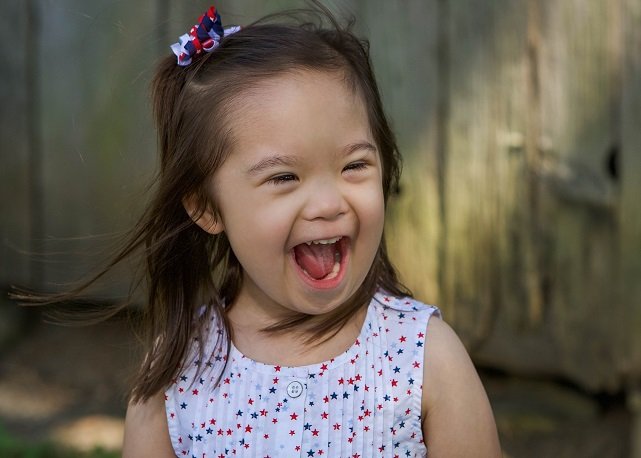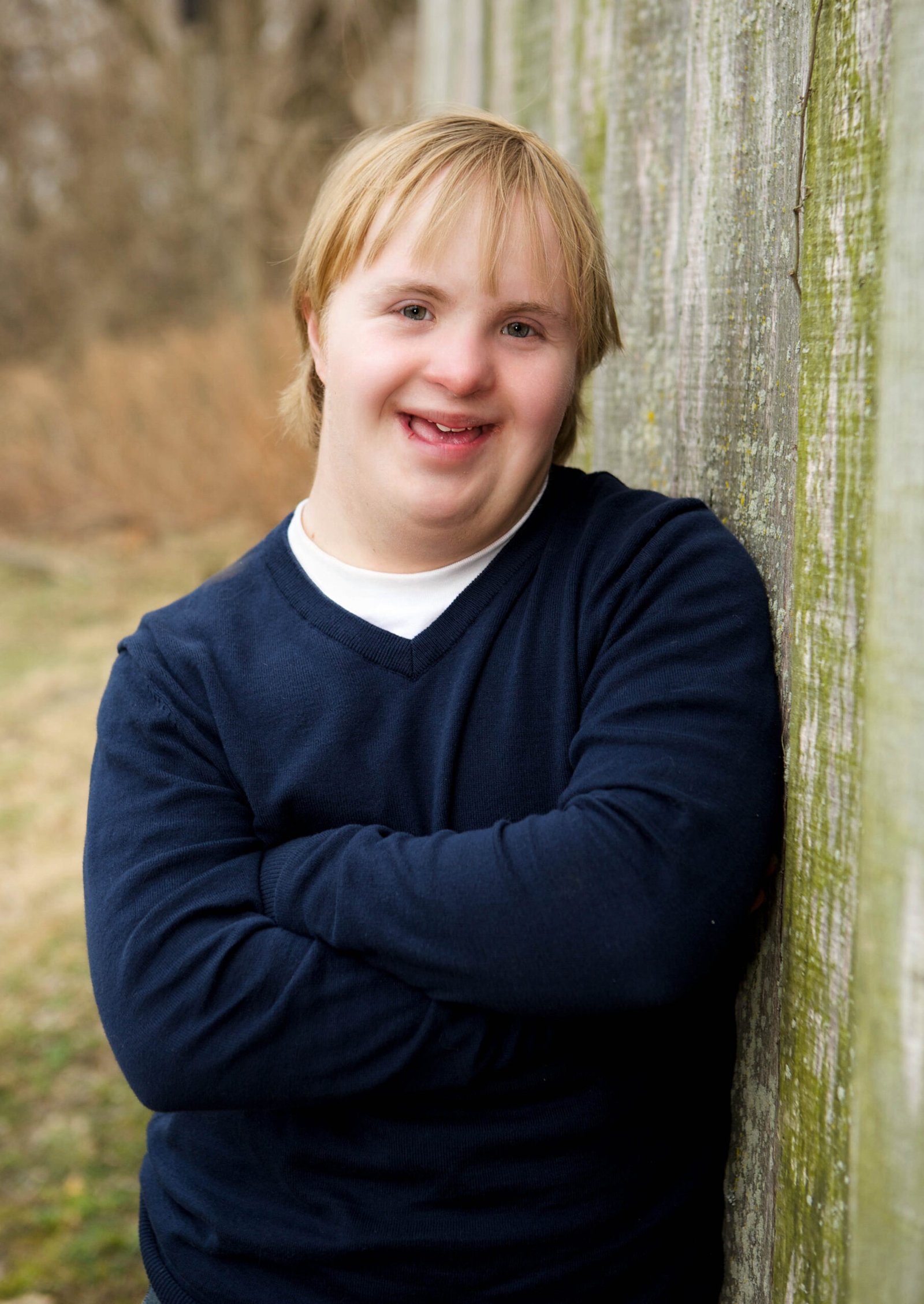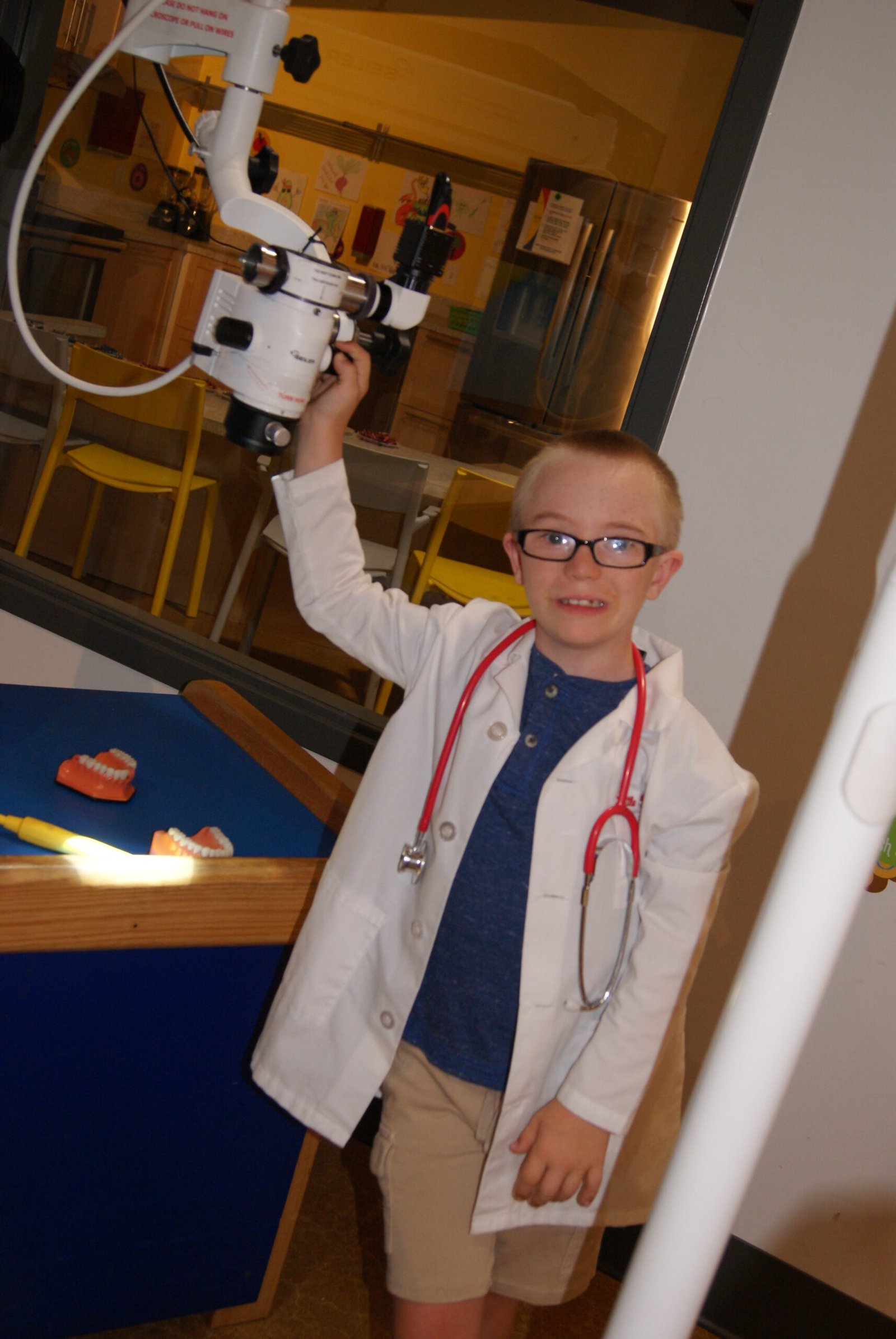
About Down syndrome

What is Down syndrome?
Down syndrome is a genetic condition that causes delays in physical and intellectual development resulting from the presence of an extra chromosome – individuals with Down syndrome have 47 instead of the usual 46.
The presence of the additional genetic material alters development and causes characteristics that are associated with Down syndrome – including low muscle tone, small stature, an upward slant to the eyes and a single deep crease across the center of the palm.
How common is Down syndrome?
Down syndrome occurs in approximately one in every 691 live births, making it the most frequently occurring chromosomal disorder. There are about 400,000 Americans diagnosed with Down syndrome and approximately 6,000 babies are born with Down syndrome each year in the United States.
What are the Different Types of Down syndrome?
There are three types of Down syndrome: trisomy 21 (nondisjunction), translocation and mosaicism.
Trisomy 21 (nondisjunction) accounts for 95% of known cases of Down syndrome. This type of Down syndrome results in an embryo with three copies of chromosome 21 instead of two and happens when a pair of 21st chromosomes in either the sperm or the egg fails to separate before or during conception. This causes the extra chromosome to be replicated in every cell of the body.
Translocation accounts for 4% of all cases of Down syndrome. In this occurrence, part of chromosome 21 breaks off during cell division and attaches to another chromosome – typically chromosome 14. The total number of chromosomes remains at 26, but the extra part of 21 causes characteristics of Down syndrome to appear.
Mosaicism occurs when nondisjunction of chromosome 21 takes place in only one of the initial cell divisions instead of all. This causes a mixture of two types of cells, some containing 46 chromosomes while others contain 47. Mosaicism accounts for only 1% of all cases of Down syndrome and research has indicated that individuals with mosaic Down syndrome may have fewer characteristics than those with the other types present.

What Causes Down syndrome?
Down syndrome is usually caused by an error in cell division called nondisjunction. It is not known why this occurs, however it is known that the error occurs at conception and is not related to anything the mother did or did not do during pregnancy. It has been known for some time that the incidence of Down syndrome increases with advancing maternal age. However, 80% of children with Down syndrome are born to women under 35 years of age.
The addition of the partial or full copy of the 21st chromosome which is the cause of Down syndrome can come from either the father or the mother.

How is Down syndrome Diagnosed?
Down syndrome is usually identified at birth or shortly thereafter. Initially the diagnosis is based on physical characteristics that are commonly seen in babies with Down syndrome, which include low muscle tone, a single crease across the palm of the hand, a slightly flattened facial profile and an upward slant to the eyes.
The diagnosis must be confirmed by a chromosome study (karyotype) that will provide a visual display of the chromosomes grouped by their size, number and shape. This chromosome study may be performed by examining blood or tissue cells and is not related to race, nationality, religion or socioeconomic status of the individual.
More Information for New & Expectant Parents
What prenatal screenings are available for expecting families?
Two types of procedures are available to pregnant women: screening tests and diagnostic tests. The screening tests estimate the risk of the baby having Down syndrome while diagnostic tests tell whether or not the baby actually has Down syndrome.
Screening tests
At this time the most commonly used screening test is “The Triple Screen.” This is a combination of three tests that measure quantities of various substances in the blood. These tests are usually done between 15 and 20 weeks of gestation. Sonograms (ultrasounds) are usually performed in conjunction with other screenings. These can show some physical traits that are helpful in calculating the risk of Down syndrome. Screening tests do not accurately confirm the diagnosis of Down syndrome. In fact, false positives and false negatives frequently occur.
Diagnosis tests
Diagnostic procedures for the prenatal diagnosis of Down syndrome include chorionic villus sampling (CVS) and amniocentesis. Both procedures are invasive and carry up to a 1% risk of miscarriage; however they are almost 100% accurate. CVS is generally performed in the first trimester between 9 and 11 weeks; amniocentesis after 15 weeks gestation.
Learning & development in individuals with Down syndrome
While children and adults with Down syndrome experience developmental delays, they also have many talents and gifts and, given the opportunity and encouragement, will develop them in time. Most children with Down syndrome have mild to moderate impairments but it is important to note that they are more like other children than they are different.
Early Intervention services should be provided shortly after birth and should include physical, speech and developmental therapies. Most children attend their neighbourhood schools, some in regular classes and others in special education classes – some children have more significant needs and will require a more specialized program. It is not highly uncommon for high school graduates with Down syndrome participate in post-secondary education and many adults are capable of working in the community while some will require a more structured environment.
Current Research
The Ances Laboratory at Washington University School of Medicine in St. Louis is a neuroscience research lab focused on developing neuroimaging biomarkers of normal aging and neurodegeneration including Alzheimer’s Disease and Down syndrome, and evaluating therapeutic interventions that will improve neurocognitive deficits and biomarkers associated with neurodegenerative disorders.
LuMind Research Down Syndrome Foundation stimulates biomedical research that will accelerate the development of treatments to significantly improve cognition in individuals with Down syndrome.
Global Down Syndrome Foundation provides information on research grants for Down syndrome and the importance of research for individuals with Down syndrome.
Stanford University is conducting a new research study on individuals with Down syndrome. This research study is conducted by Dr. Ahmad Salehi. The focus of this study is on a therapeutic strategy for intellectual disability in Down syndrome.
DS-Connect is the Down syndrome registry. This website allows information to be shared among families, patients, researchers, and parent groups. Family members or individuals with Down syndrome are able to enter their health history and contact information into a confidential database.

